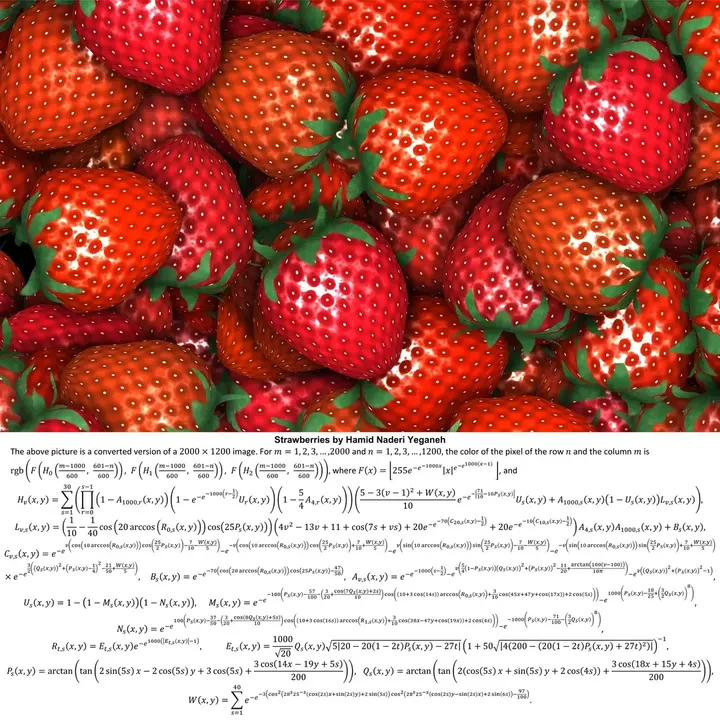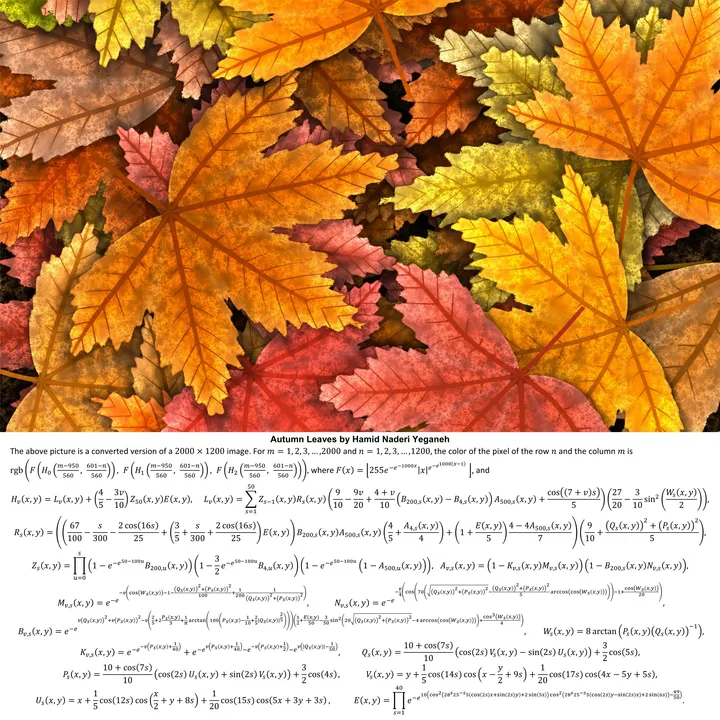These images were created using mathematical equations only!
Uncover the magic of math turning equations into stunning visuals, from heart shapes to mesmerizing fractals. Read on to see how numbers can create pure art!
In a mesmerising blend of art and mathematics, a research student from University College London (UCL) has recently gained widespread attention for creating intricate images solely through mathematical equations. This innovative approach not only showcases the aesthetic potential of mathematics but also underscores its universal language.
The Mathematical Canvas: How It Works

At the heart of this artistic endeavor is the concept that mathematical equations can be visualised as graphs, producing specific shapes. For instance, plotting the equation (x^2 + y^2 - 1)^3 - x^2y^3 = 0 on a graph yields a heart shape. (Try it for yourself)
Digital images consist of a grid of pixels, each assigned a color defined by RGB (Red, Green, Blue) values. By devising equations that determine the position and color of each pixel, it's possible to generate complex images. This method involves assigning mathematical functions to control pixel intensity and hue, resulting in detailed and vibrant visuals.
Fractals: Nature's Mathematical Art
A significant aspect of this technique involves fractals—infinitely complex patterns that are self-similar across different scales. Fractals are prevalent in nature, seen in snowflakes, mountain ranges, and coastlines. By applying mathematical formulas, artists can recreate these natural patterns digitally. The Mandelbrot set, defined by the equation z = z^2 + c, is a classic example of a fractal that produces intricate, self-repeating designs.
The Intersection of Mathematics and Art

The fusion of mathematics and art is not a novel concept. Historically, artists have employed mathematical principles to achieve balance and harmony in their work. The golden ratio, approximately equal to 1.618, has been used to create aesthetically pleasing compositions. In contemporary times, mathematical visualisation has evolved with technology, enabling the creation of complex digital artworks that are both precise and expressive.
Tools of the Trade
Several tools facilitate the creation of mathematical art:
- Fractal-Generating Software: Programs like Apophysis and Ultra Fractal allow artists to produce fractal images by manipulating mathematical parameters.
- Online Equation Editors: Platforms such as MathTyper enable users to create and visualise mathematical equations, which can be used to generate images.
- Graphing Calculators: Tools like Desmos provide interactive graphing capabilities, allowing users to plot equations and observe the resulting shapes.
The Beauty of Mathematical Art
The creation of images through mathematical equations exemplifies the inherent beauty of mathematics. Studies have shown that perceiving mathematical beauty activates the same brain regions as experiencing art or music. This intersection of disciplines highlights the universality of aesthetic appreciation, transcending traditional boundaries.
The viral artwork from the UCL student serves as a testament to the creative potential of mathematics. By harnessing mathematical equations, artists can produce intricate and captivating images, bridging the gap between analytical and creative realms. As technology continues to advance, the fusion of mathematics and art promises to yield even more astonishing creations, proving that, indeed, math can be a work of art.
Edited by Rahul Bansal







